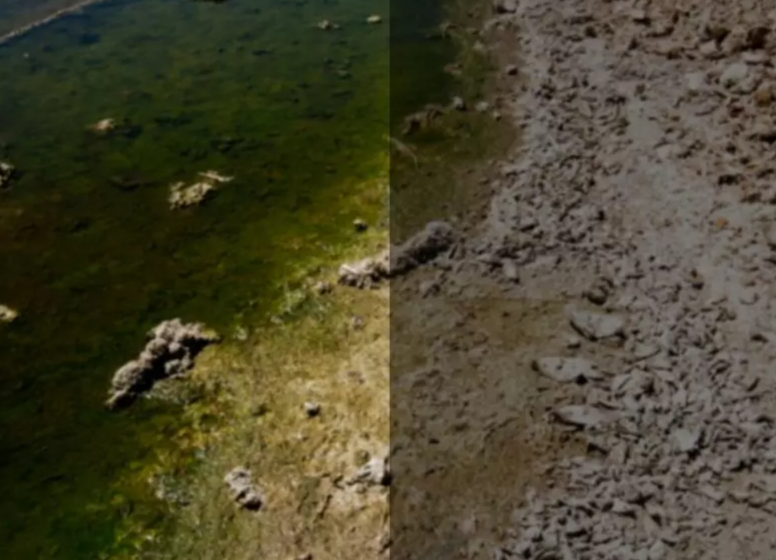
Drugs like Tylenol, ibuprofen, naproxen, codeine, antidepressants, and antibiotics all have something in common, they have all been found in coastal waters, lakes, and rivers across the United States. Scientists and U.S. geological surveys have revealed the presence of pharmaceuticals in high concentrations of parts per billion up to parts per trillion. The presence of these drugs in U.S. waterways is a serious potential environmental and human health risk that can be minimized by properly disposing of drugs and not flushing medications down the drain.
Prescription Drugs Contaminate Lake Michigan
According to an article from September of 2013 in Scientific American, Drugs Contaminate Lake Michigan, drugs were found in the Great Lake far from the sewage outfalls of Milwaukee, suggesting that these compounds are not being diluted as scientists once expected. Some studies have shown the negative effects these pharmaceuticals have on fish and aquatic creatures although more research is needed. The ability for these pharmaceuticals to remain at relatively high concentrations does indicate a serious impact on aquatic life and human health near the shore.
In a report by Science Direct, pharmaceuticals and personal care products have been found in the Great Lakes in concentrations far above environmental concern. Monitoring of pharmaceuticals in large lake systems such as the Great Lakes was sparse compared to the monitoring of small lakes and rivers. Pharmaceuticals and personal care products (PPCPs) are a major source of environmental contamination as wastewater treatment applications are not optimized for removal. The concentration and corresponding risk of PPCP’s from wastewater sources at various distances was evaluated on Lake Michigan. The study revealed 54 PPCPs and hormones were found over a two-year period on six different assessments of sediment and surface water at two sites in the harbor and up to 3.2 km from a wastewater treatment plant.
U.S. Geological Survey Reveals Contamination in 80% of Streams
A U.S. Geological Survey from 2002 revealed a broad range of chemicals found in industrial, agricultural, and residential wastewaters was a common occurrence downstream from animal production and intense urbanization. Chemicals found included veterinary and human drugs such as synthetic and natural hormones, antibiotics, insecticides, plasticizers, fire retardant, and detergent metabolites. At least one or more of these types of chemicals were found in at least 80% of the streams sampled, with half of the streams containing at least seven or more chemicals and approximately one third of the sampled streams containing 10 or more chemicals. This study supports the mission of the USGS to assess the quality and quantity of the water resources in the U.S.
EPA and the Clean Water Act
The Environmental Protection Agency (EPA) continues to determine the prevalence of contaminants in treated and untreated drinking water. As only 2.5% of all water on the Earth is fresh, treating and reusing water in a smart and effective way is crucial for humans to preserve this precious resource. Pharmaceutical contamination of our water supplies is an emerging concern of the EPA, and violations can result in significant fines. The Clean Water Act prohibits the discharge of pollutants and hazardous substances into U.S. waters with hefty penalties for violations.
In 2013, retail giant Walmart admitted violating civil and criminal laws such as the Resource Conservation and Recovery Act (RCRA) which protects the quality of water and ensures the proper handling of pesticides and hazardous waste. Walmart pleaded guilty to federal environmental crimes and paid more than $81 million.
As these studies and evidence of major violations prove, responsible pharmaceutical waste without polluting water resources is critical for human health and to prevent major liability.
Responsible Pharmaceutical Waste
Designing and implementing a pharmaceutical waste management program is important for responsible and federally compliant pharmaceutical waste. Eliminating disposal down the drain, avoiding stockpiling, land filling, and properly training all staff is critical. Rx Destroyer™ offers companies safe and compliant pharmaceutical waste disposal in easy to use products that quickly neutralize medications through chemical digestion. Chemical digestion is a DEA compliant method of drug destruction.
C2R Global Manufacturing is the patent holder for Rx Destroyer™ drug disposal products, an important part of responsible drug disposal. We offer pharmaceutical waste disposal solutions with a variety of product sizes, mail back options and waste haulers to meet your needs. Contact us to learn more about saving the environment through responsible pharmaceutical waste disposal to prevent water contamination.
MYRANDA ECKERT
Myranda Eckert is the Project Development Manager for Rx Destroyer ™. Contributing to the company goal of reducing the amount of unused or expired medication, Myranda focuses on communications and projects internally and externally to increase brand awareness, social impact, and overall efficacy. Her background in education and pharmaceutical industry knowledge allows her to support DEA registrants by keeping them informed on pharmaceutical disposal compliance regulations to ensure seamless integration and maintenance of their facilities' pharmaceutical waste. Saving Water, Saving Lives, One Prescription at a Time.
View all posts by Myranda Eckert